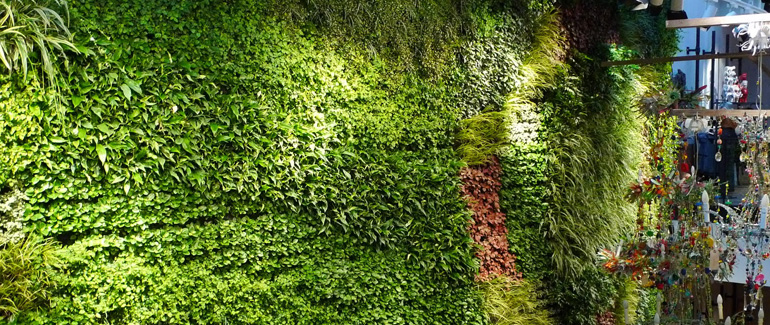Living environments

Living environments
Thinking of the Earth and our relationship with it, and the plants better design incorporates the living elements of the Earth into our environment. Such designs are living walls or living interiors or living exteriors. Being in a living space calls our sense of humanity, and offer a tranquil and sage environment where people feel most at ease and natural.
Designing with the Earth in mind is crucial to a more natural space.
Living walls or green walls are self-sufficient vertical gardens which can be attached to the exterior or interior of a building. These are not green façades such as ivy walls but have living plants root in a structural support which is attached to the wall or structure itself. The plants receive water and nutrients from within the vertical support instead of from the ground.
These types of designs are truly green walls. Green walls may be indoors or outside, freestanding or attached to an existing wall, and come in a great variety of sizes. Green walls are found most often in urban environments where the plants reduce overall temperatures of the building. "The primary cause of heat build-up in cities is insolation, the absorption of solar radiation by roads and buildings in the city and the storage of this heat in the building material and its subsequent re-radiation. Plant surfaces however, as a result of transpiration, do not rise more than 4–5 °C above the ambient and are sometimes cooler."
Living walls may also be a means for water reuse. The plants may purify slightly polluted water (such as greywater) by absorbing the dissolved nutrients. Bacteria mineralize the organic components to make them available to the plants. A study is underway at the Bertschi School in Seattle, Washington using a GSky Pro Wall system, however, no publicly available data on this is available at this time.
Living walls are particularly suitable for cities, as they allow good use of available vertical surface areas. They are also suitable in arid areas, as the circulating water on a vertical wall is less likely to evaporate than in horizontal gardens.

